 "/>
"/>
 "/>
"/>

在绵亘万里的古丝绸之路上,古都长安曾是耀眼夺目的世界经济、文化中心;而当代西安是“一带一路”国家战略下引领中西部开放发展的创新引擎。“丝路科学城”是西安高新区于2021年启动建设的国际化科学城,也是引领西安建设“双中心”(综合性国家科学中心和区域科创中心)的核心支点。
如何平衡西安深厚的历史文化积淀与高新科技所驱动的“硬核”发展?景观设计在新城发展过程中将扮演怎样的角色?筑格对话AECOM公司景观部门负责人李程(Lee Parks),带您走进景观建筑师的独特视角。
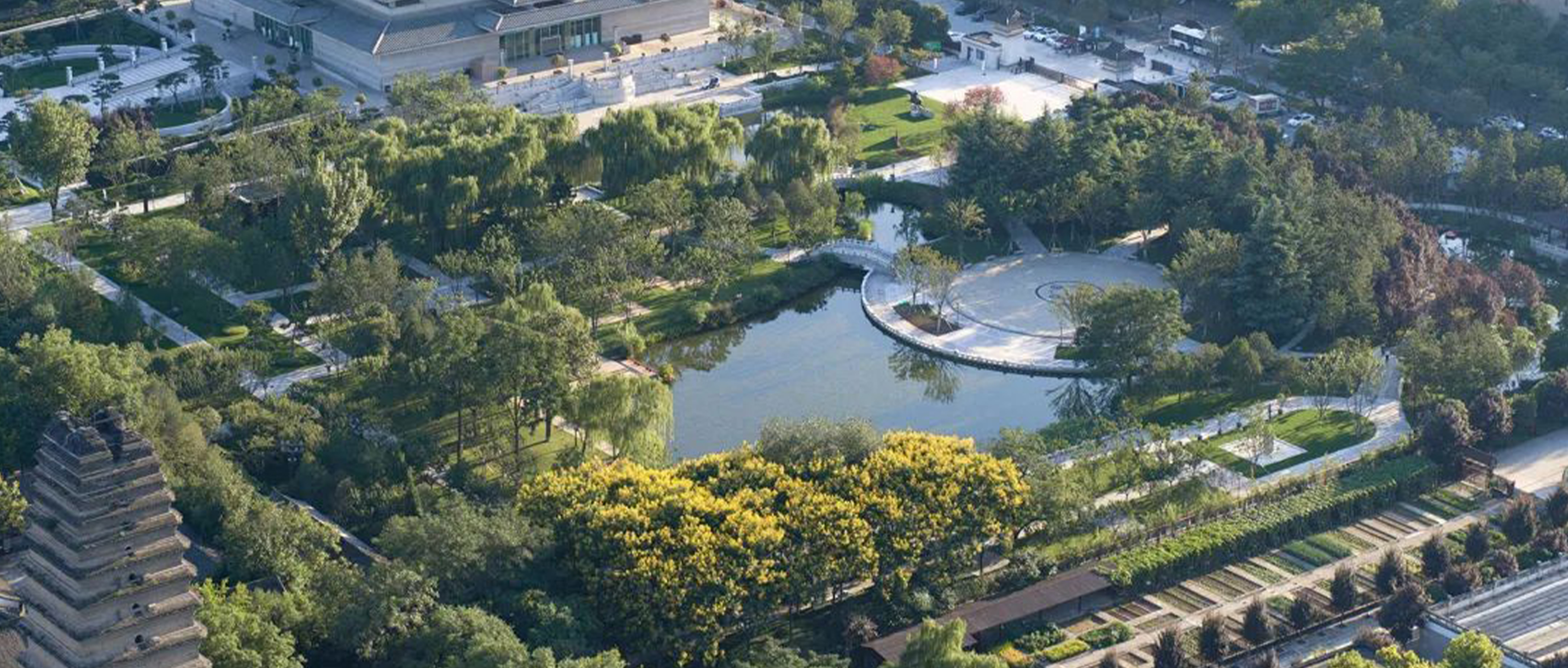

在绵亘万里的古丝绸之路上,古都长安曾是耀眼夺目的世界经济、文化中心;而当代西安是“一带一路”国家战略下引领中西部开放发展的创新引擎。“丝路科学城”是西安高新区于2021年启动建设的国际化科学城,也是引领西安建设“双中心”(综合性国家科学中心和区域科创中心)的核心支点。
While the ancient capital of Chang'an was once an international economic and cultural center on the Silk Road stretching over Asia and Europe, contemporary Xi'an is an innovation engine leading the development of central and western China, under the national initiative of "One Belt, One Road". "The Science City of the Silk Road" is an international science hub initiated in 2021 by the Xi'an Hi-Tech Zone, and also Xi’an’s pivoting point to build a "Dual Center" (a “comprehensive national science center” and a “regional technological innovation center”).
如何平衡西安深厚的历史文化积淀与高新科技所驱动的“硬核”发展?景观设计在新城发展过程中将扮演怎样的角色?筑格对话AECOM公司景观部门负责人李程(Lee Parks),带您走进景观建筑师的独特视角。
In the process of urbanization, how to balance the historical and cultural heritage of Xi'an with the economic development driven by high-tech? What is the role of landscape in the process of urban development? ArchiDogs were honored to interview Mr. Lee Parks, the Head of Landscape at AECOM, sharing the unique perspective of a landscape architect.

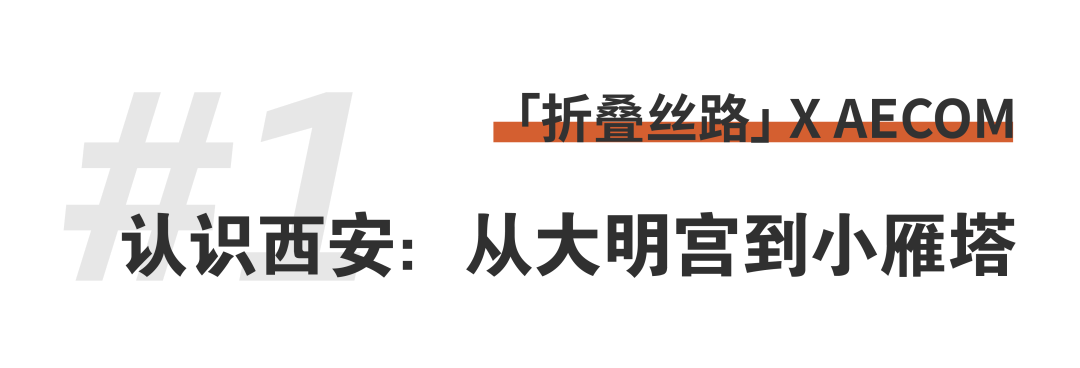
历史文化建设从来不是一朝一夕的成果,从大明宫到小雁塔,西安的十几年间,在城市公共空间中做出了策略性的改变。如何“重现历史”、将历史融入现代化公共空间,这不仅是建筑师的命题,更是景观设计师对细节和空间体验的追求。
Historical and cultural construction is never the result of a single day. Xi 'an has made strategic changes in the urban public space in the past decade from Daming Palace to the Small Wild Goose Pagoda. How to "reproduce history" and integrate history into modern public space is not only the proposition of architects but also the pursuit of details and spatial experience of landscape architects.

您在2008年参与了大明宫国家遗址公园的前期规划,2021年又主持设计了西安小雁塔历史文化片区的综合改造。在这十几年间,您如何看待西安在历史文化建设方面的有哪些策略性的改变?
You have participated in the pre-planning of Xi’an Daming Palace National Relic Park in 2008, as well as the renovation of the Small Wild Goose Pagoda district in 2021. What is your opinion on Xi’an’s strategic changes over the past decade?

2008年,在大明宫国家遗址公园项目的国际竞标之前,我参与了它的前期规划,研究如何在呼应历史与考古发现的同时,规划一个更加生态友好的遗址公园,但我没有参与后续阶段的规划与设计。最终建成的遗址公园尺度非常壮观,我认为这和当时大家十分强调唐代长安的宏伟气势有关,设计者需要体现出大明宫的宏大空间,以彰显长安的历史地位。
In 2008, I was involved in the pre-planning of Daming Palace which was a study before an international competition was held. The point of that study was to try and get a much greener national relics park and responsive to archaeology and history, but the end result of that park, which I wasn't involved in, is very grand in terms of design. I think at that time, there was a lot of emphasis on the magnificence of the ancient capital and creating an enormous space for celebrating history.
十几年之后的今天,小雁塔片区更新项目所关注的重点则有所变化。我们团队的设计以人为本,对社区更为友好,同时更为环保、具有可持续性。作为设计师,我很欢迎这样的变化,它使设计师能够为游客以及当地居民创造更具普惠性的公共空间。
After a decade, working on the Small Wild Goose Pagoda, the emphasis has been changed, to a more human-oriented, community-friendly, greener, and more sustainable design. It was a really nice and welcome change. And, it enabled us as designers to really create a place for tourists and local residents in the community to make it much more inclusive.
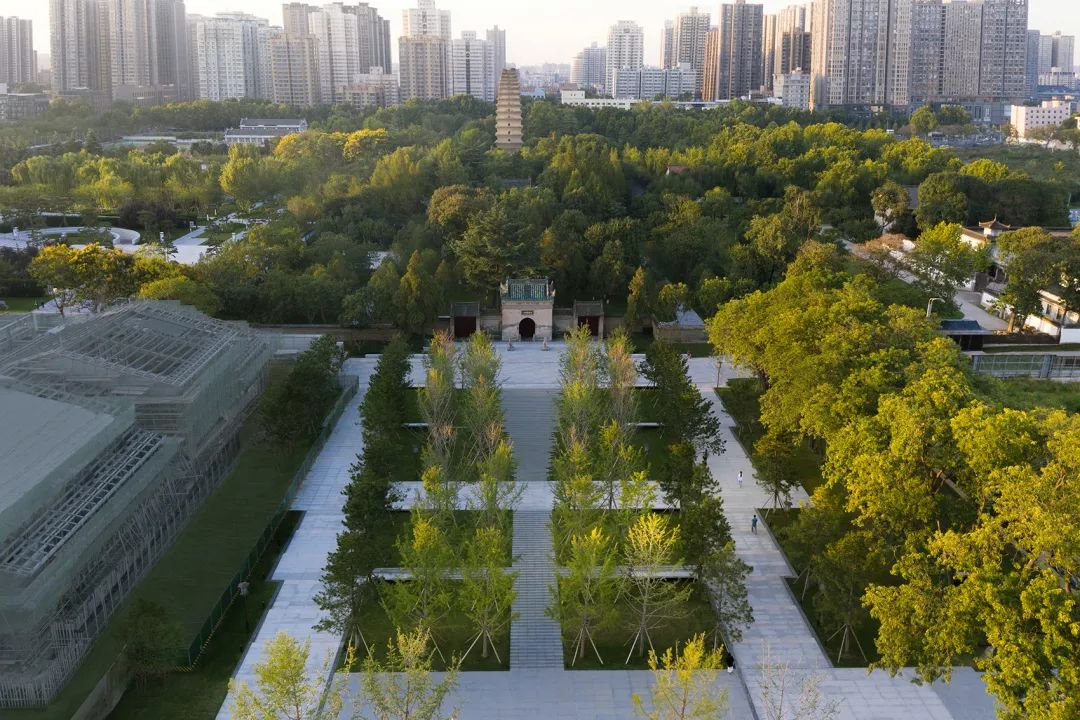
小雁塔历史文化片区综合改造项目 西苑鸟瞰 ©丘文建筑摄影-邱日培
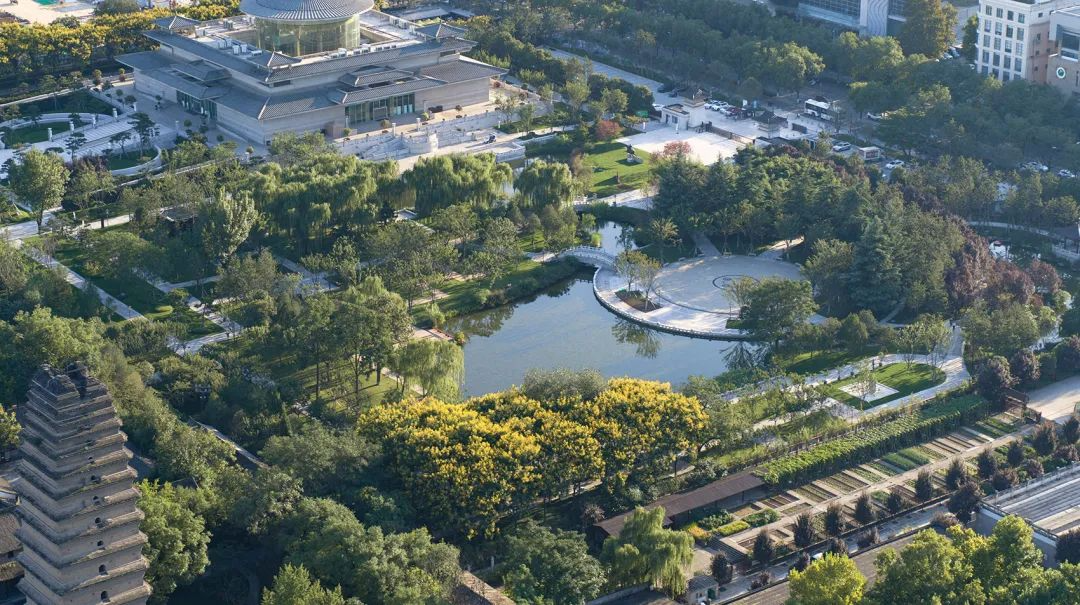
小雁塔历史文化片区综合改造项目 轴线视角 ©丘文建筑摄影-邱日培

在小雁塔片区项目中,可以看到很多有趣的细节,就像给大家创造了公园中寻宝的体验,你们如何打造这样的空间?
We've seen lots of fine details in the Small Wild Goose Pagoda project. Could you please tell us more about these details? It’s kind of like treasure-hunting in the landscape.

小雁塔是唐代古迹,我们的部分创作灵感也来源于西安博物院所展出的一些唐代古物。在设计过程中,我们希望用当代的方式表现这些传统的形式,将传统融入景观地面铺装、公园设施的一些细节中,这样所呈现的传统叙事就不会太直白。
I was very inspired by the pagoda itself and some of the artefacts in the Xi'an museum which includes relics from the Tang Dynasty. We wanted to be able to present those in a more contemporary way, integrating those into some of the subtle details whether that's paving or furniture to tell the story, but not too strong.
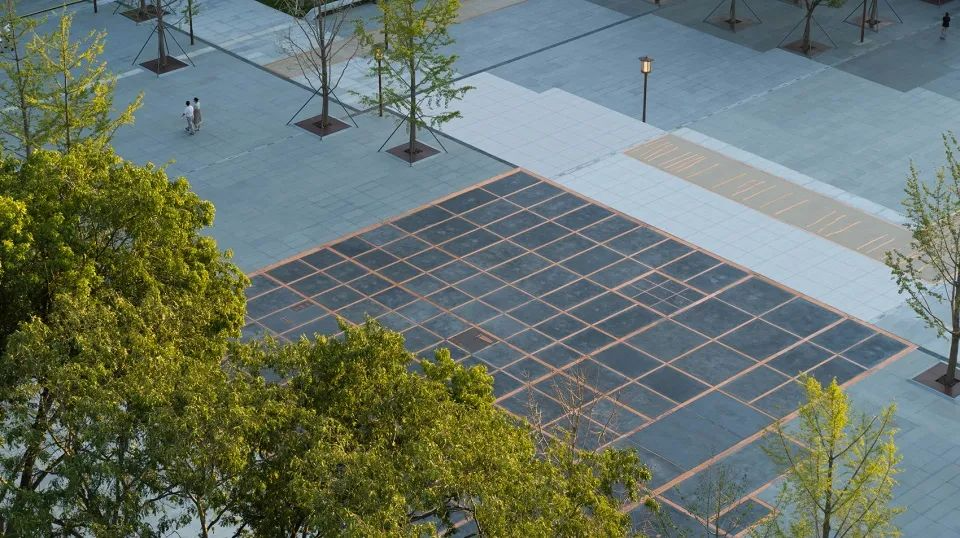
“雁归里坊”广场铺装印刻着唐代108坊与保留的古车辙印的历史记忆。©丘文建筑摄影-邱日培
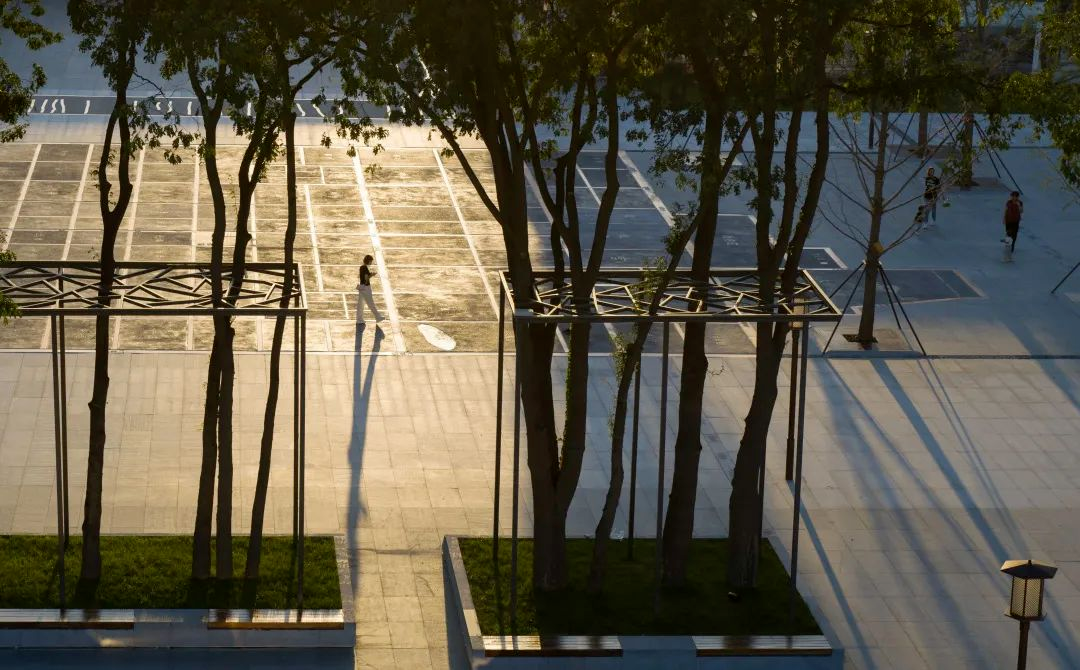
保留的列植皂荚,增强了历史片区的浑厚气势,在主要的通行廊道处进行疏伐,打开视线。设计创新优化了大树支撑结构,使广场空间更安全,活动空间范围更大。©丘文建筑摄影-邱日培
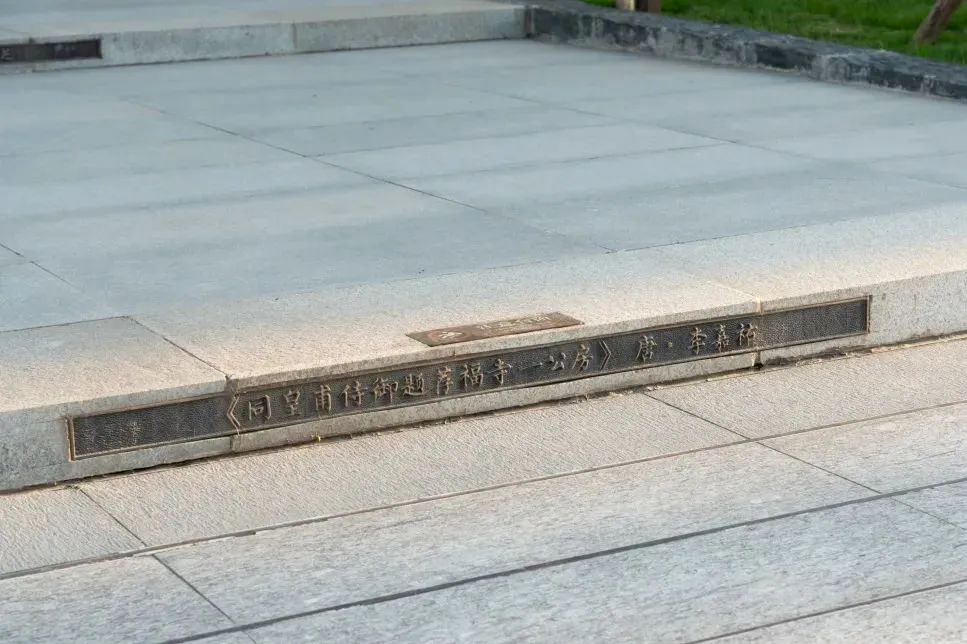
于景观细节感知文脉,将小雁塔密檐式建筑语言、唐三彩等文化特色融入空间细节。©丘文建筑摄影-邱日培
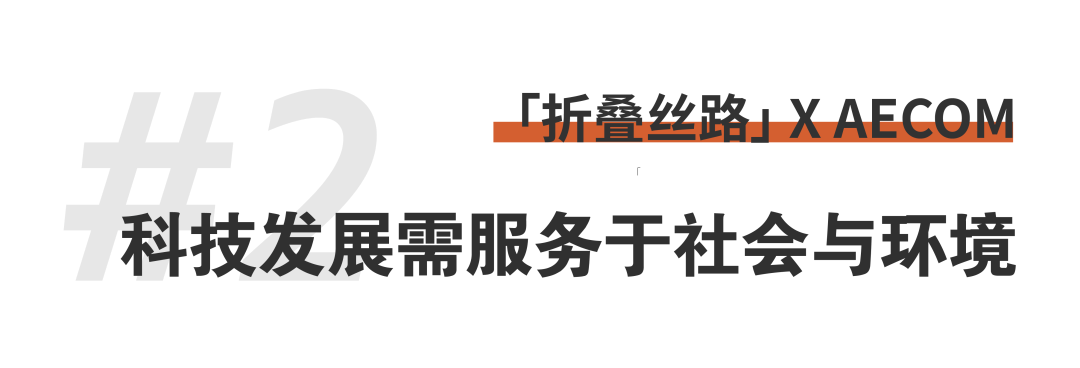
丝路科学城是西安高新区于2021年启动建设的新区域,目前已初具规模。科学城中的高新科技产业在促进经济发展的同时,也可以被运用于历史文化保护与生态环境修复。
"The Science City of the Silk Road" was first established in the Xi'an Hi-Tech Zone in 2021, and it is now taking shape. While promoting economic growth, high-tech industries in this smart city can also benefit historical preservation as well as the environment.

在当前这个古今交汇的时空语境下,从建筑或城市的角度出发,如何平衡历史遗产保护与科技发展?
Currently, in establishing the High-Tech Zone, Xi’an is pursuing development in terms of high-tech and information digitalization under the “One Belt One Road” policy. In the meantime, Xi’an’s profound historical identity is very much cherished by the public. In your opinion, how do we balance the historical context and technological development?

作为一个景观建筑师,我认为,科技与历史保护应该是协调一致的,两者之间不应有冲突。值得我们深思的是如何妥善运用技术,保证其产生的结果是积极的。对设计师来说,使用各种技术来表达设计意图、提升设计效率;对于使用空间的居民及消费者来说,设计师应该保证科技被运用于遗产保护,及提升社会公平与包容性等方面。
As a landscape architect, obviously, technology and historic conservation should be aligned. There shouldn't be a conflict between these two. The secret for us is how to leverage technology for a positive outcome. Designers use technology to convey our design intent and use that technology to improve the efficiency of design. But then the technology for the residents, consumers and people who use the spaces we create, should be used in a way that really does help protect relics and promote social equity and inclusion.
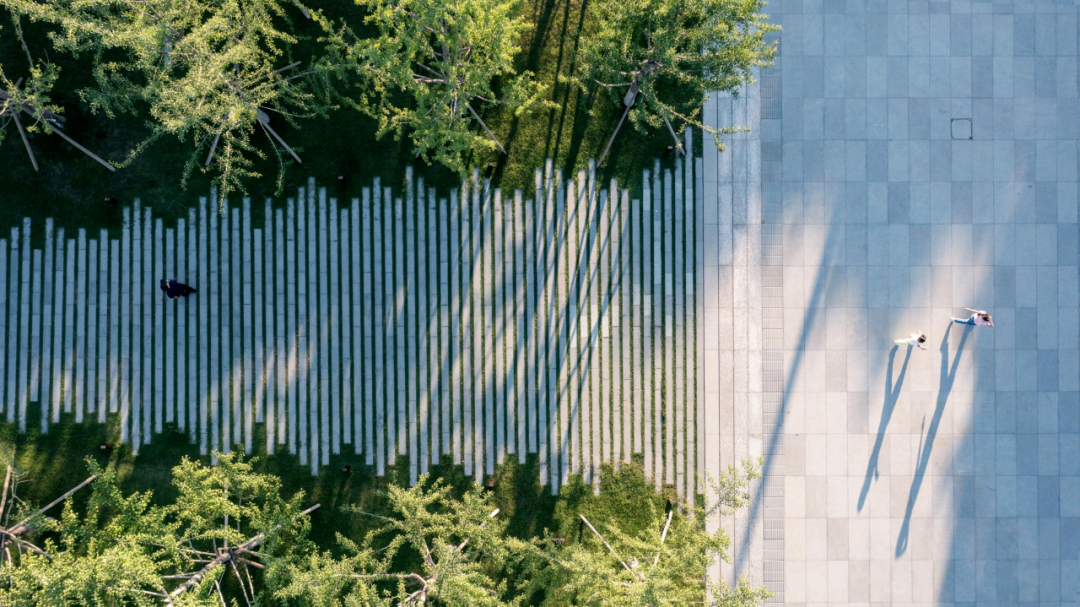
小雁塔历史文化片区综合改造项目 ©AECOM

在您看来,以科技发展为导向的高新区,在发展中所需要的核心元素是什么?
In your opinion, what's the key element that a technology-oriented high-tech district needs in its development?

我认为,城市发展中需要运用科技造福社会与环境,用科技应对气候变化、生物多样性丧失等当下面临的严峻挑战。信息数字技术的创新利用,将帮助我们更好地应对气候变化危机,最终为居民、社区甚至野生动植物带来福祉。
I think technology should be used in ways to benefit society, to benefit the environment, to tackle issues like climate change or biodiversity loss. What we need to do is use data and information in a way that enables us to do better for people, for communities and for wildlife, and to tackle the big issues of our day which are climate-change related.
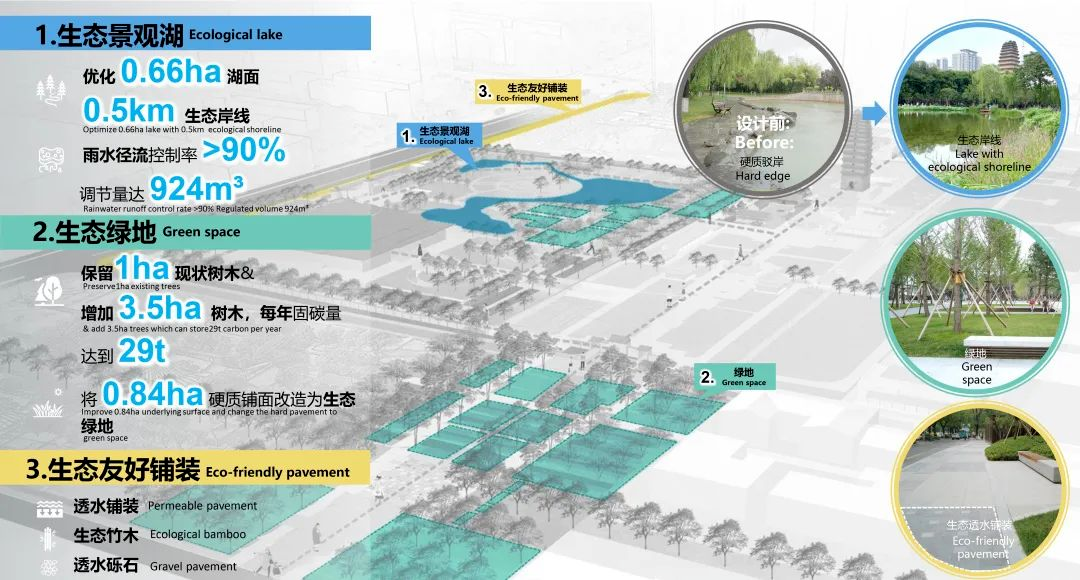
小雁塔片区海绵设施布局 ©AECOM&西安小雁塔景区运营管理有限公司
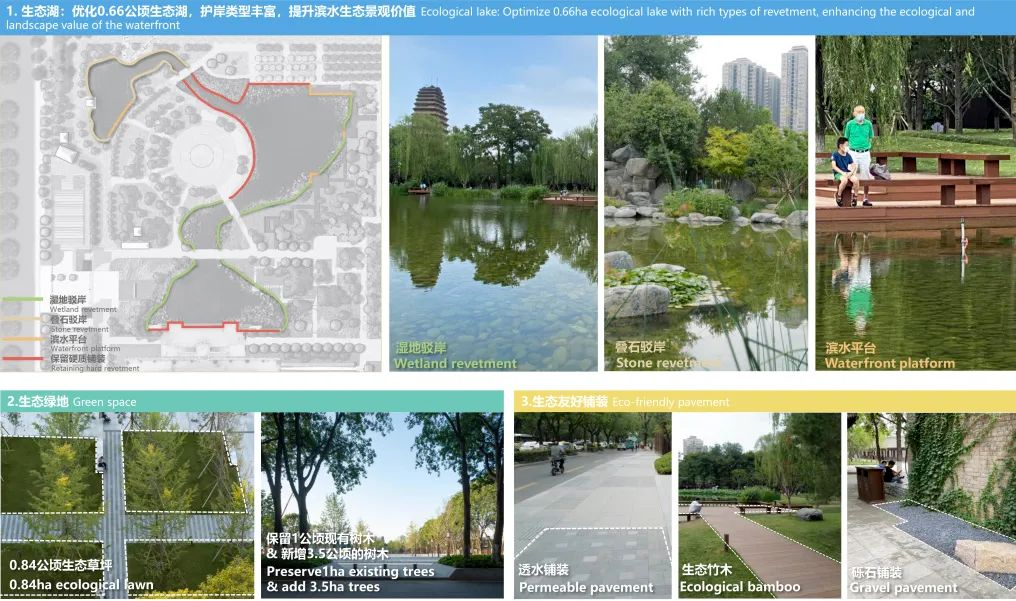
小雁塔片区生态策略 ©AECOM

西安高新区丝路科学城的建设正如火如荼地展开,作为设计师如果有机会参与到高新区的城市建设中,您会有怎样的建议?
The High-Tech Zone is now taking shape. If you had a chance to participate in its urban development, what would you like to do? Do you have any suggestions?

我想到了“一带一路”与科技发展的关系。近年来,中国在植树造林方面付出了很大的努力。如果有可能的话,高新区可以建一座处理环境数据的研究中心,搜集高新区的生态绿化数据,用数字科技搜集和管理“一带一路”沿线重新造林与生态恢复的情况。这样,西安可以作为丝绸之路生态走廊的起点,在修复地球环境、维护生态多样性、应对气候变化等方面树立表率。
I was thinking about the idea of the Silk Road and technology. I know that over recent years, there has been a lot of effort to increase afforestation. I think that the science and technology base can have a research center or science-base where data is collected, to look at this ecological greening from the high-tech district along the Silk Road, to imagine reforestation, habitat restoration, and to monitor all of that through digital technology. So this should be the start of a Silk Road Ecological Corridor restoring the planet, thinking about biodiversity gain, and tackling climate change.
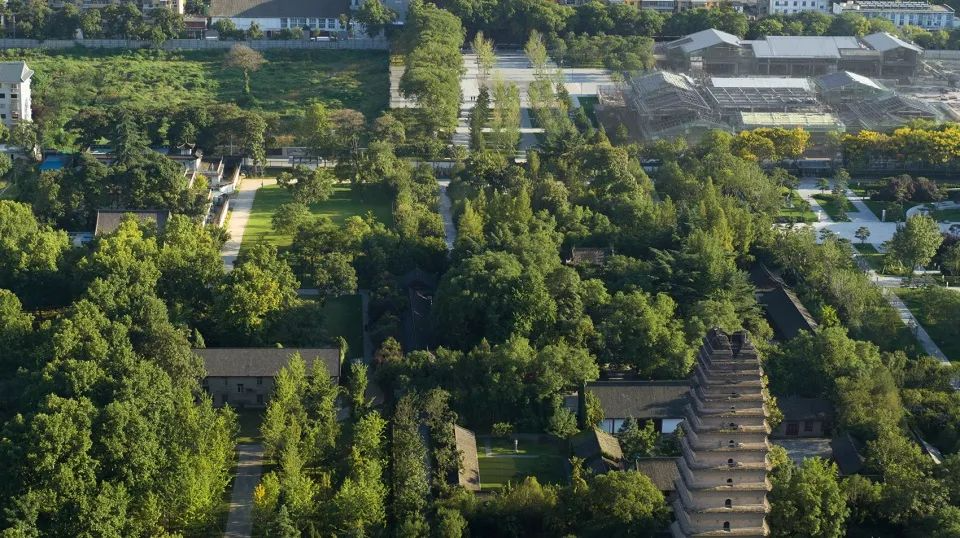
小雁塔历史文化片区综合改造项目 ©丘文建筑摄影-邱日培

在城市建设中,景观设计对优质公共空间的创造起到重要作用。“景观(landscape)”这一概念,超越街区以及城市的尺度,甚至能打破国界。在应对气候变化和生物多样性危机这样的全球议题时,也起到不容忽视的作用。
In urban development, landscape architecture plays an important role in creating good public space. The idea of landscape goes beyond the scale of an urban neighborhood or a city, and even extends beyond the limit of national boundaries. Its role in addressing global issues such as climate change and the biodiversity crisis cannot be ignored.

科技发展日新月异,近年来数字虚拟、人工智能等高新科技如雨后春笋般涌进大众市场,您认为建筑设计、城市规划或景观设计应该如何与新技术结合?或者您曾在哪个项目中尝试结合吗?
The technological revolution has brought about new concepts like VR and AIGC, which have become mainstream in recent years. How do we integrate these cutting-edge technologies into architecture, urban planning, or landscape architecture? Have you tried any of these technologies in your previous projects?

AI 图像生成和可视化技术的发展正给市场带来飞速变革,因此不少建筑师和设计师都开始为未来的工作感到担忧,但我认为技术进步将帮助促进设计师的想象力和创造力。新技术将在初始的概念设计阶段发挥很大作用;同样的,VR(虚拟现实)和数字建模技术在与客户沟通以及施工过程中都很有帮助,可以将设计的所有细节可视化,大大提升设计效率。
The AI imagery and visualization is rapidly changing in the market, and many architects and designers worry about their jobs in the future. However, technology is there to really help imagination, creativity, and innovation. It plays a very important role in the beginning concept stage. Then, when we use things like VR and digital models of our projects, we can help clients understand the designs we're creating, and visualize all of the details to help with construction.
AECOM在上海设计的杨浦大创智数字公园(KIC 481)是杨浦区首批数字公园之一,设计突破了传统景观设计的方式,包含了对公共空间资产化和科技赋能的探索,借助虚拟数字技术的力量,通过“线上+线下”联动的数字公园营造新模式,更好地为城市居民服务。我们的实践正处于数字化转型阶段。
AECOM has a project in Shanghai in the Greater Knowledge Innovation Community (GKIC). It’s one of the Yangpu district’s first digital parks and will enable school children to engage in education, which would involve technology companies to install technology platforms for forums and engagement. We are also involved in the digital transformation of our practice.
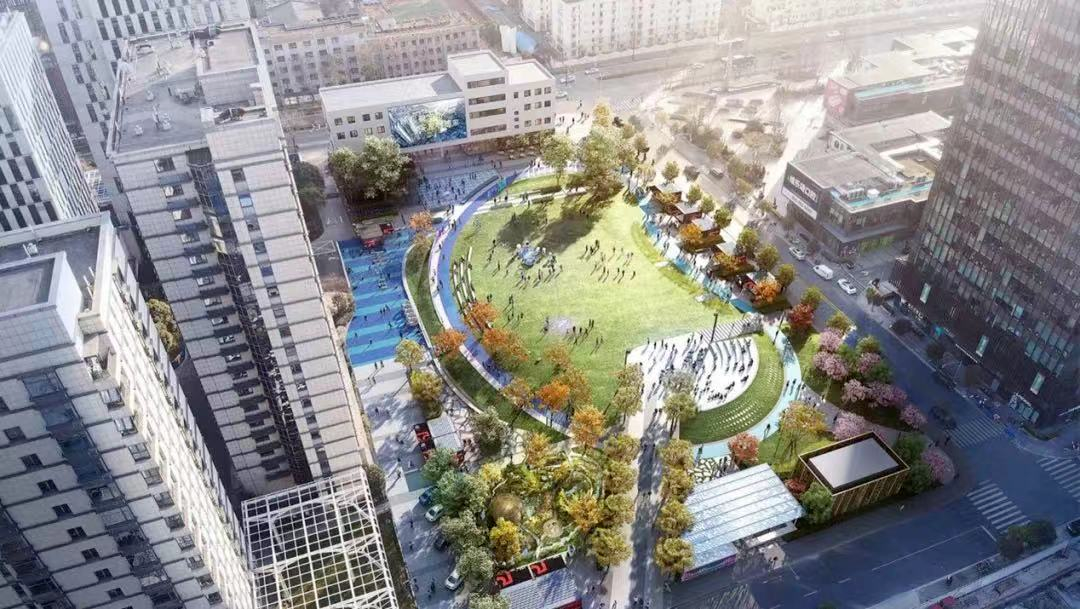
上海KIC 481数字城市 ©AECOM

您曾在SRC街景研究中心的论坛中提到,街区的意义远在街区之外。现在的城市或景观设计如何平衡经济、环境、文脉与社会的需求?
At the Conference of Streetscape Research Center, you stated that the significance of street blocks goes beyond the blocks. In this era, overloaded with digital information and surrounded by highly modernized urban space, how can urban or landscape design balance economic, environmental, social, and cultural needs?

这是一个很大的议题。在全球范围内,已经有很多关于环境、社会、治理(Environmental, Social, Governance, 简称ESG)的讨论,该议题关注长期可持续发展与韧性。我之前所提出的关于街景的观点是指我们不能仅仅在规划红线中考量一个项目,而是要考虑到该项目对周边社区的影响,以及场地与周边生态空间的连接。在增加优质公共空间与社区资源的连通性、可达性方面,景观设计起到很重要的作用。
This is a very big topic. From a global perspective, there's a lot of talk about environmental, social and governance strategies, or ESG. ESG should also think about resiliency,the long-term sustainable development. In the talk I did for the Streetscape Research Center, the idea of going beyond the block was that we don't look at a project from a red line. We look at how it impacts surrounding communities or connects to several surrounding green spaces. So, landscape architecture plays a really important role extending the connectivity and the access to good public space and community resources.
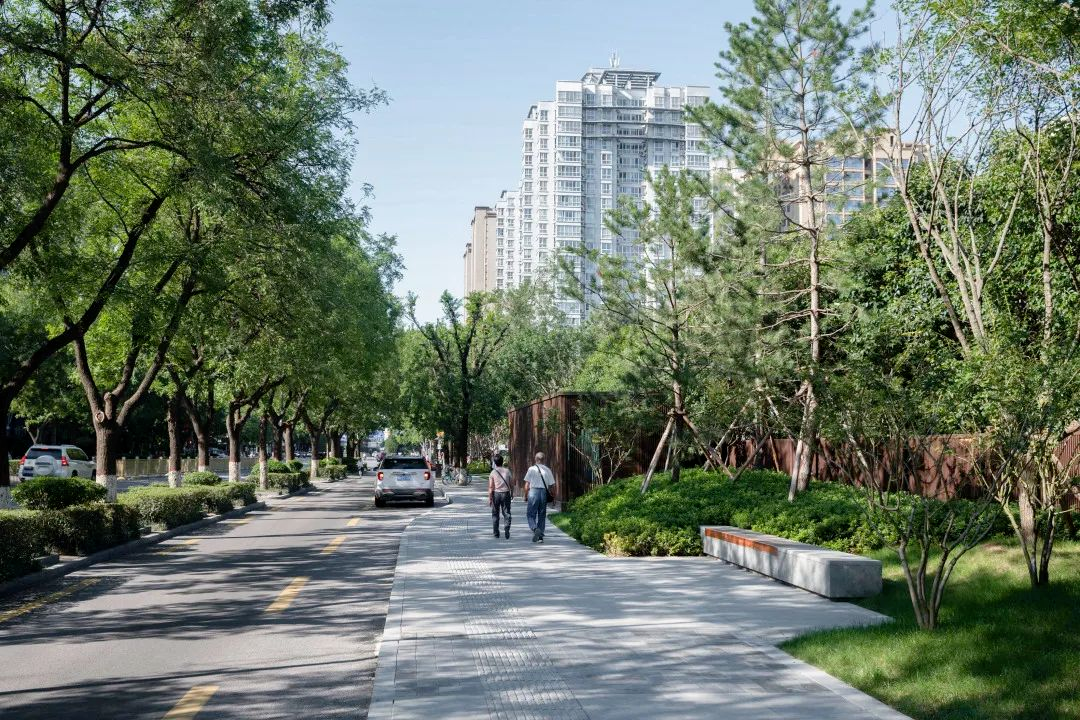
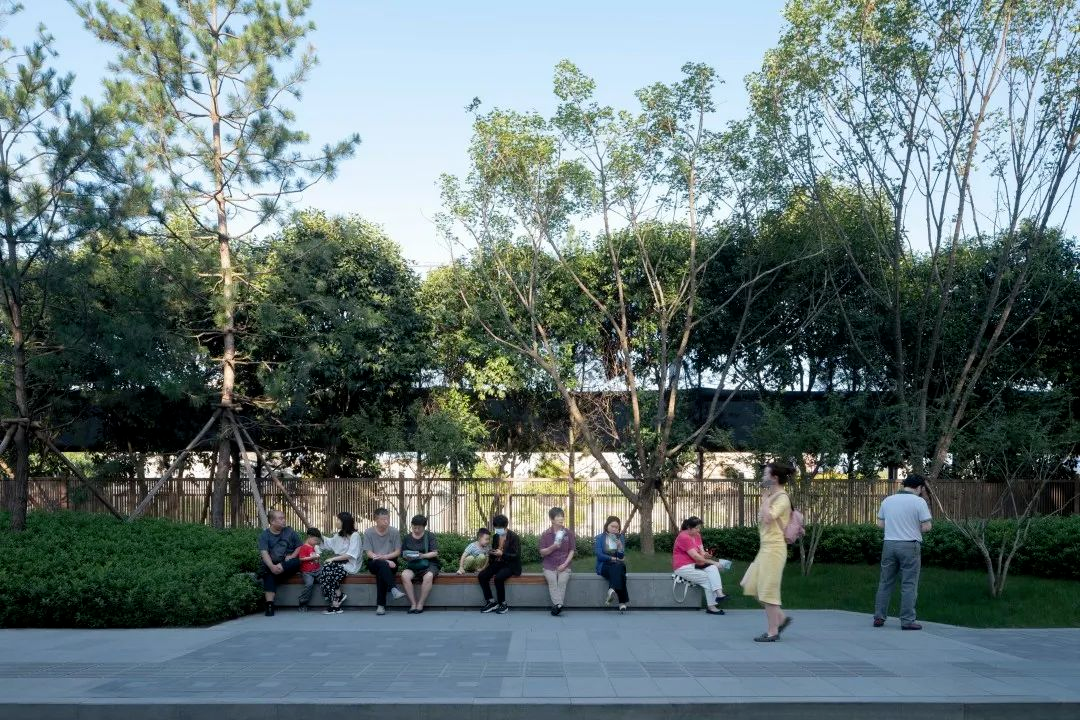
小雁塔片区改造后的城市界面 ©丘文建筑摄影-邱日培

不知您是否感觉到,在中国的业界,建筑设计似乎比景观设计更重要,景观设计似乎是为建筑设计服务的。但在其它一些国家,建筑、景观等设计师是通力合作的。(在中国的市场)需要倡导“景观设计先行”吗?
I just thought of another question. In China, it seems that architecture is more important than landscape, but I know that in other countries, landscape architects and architects cooperate together. Do you think landscape should get first and then invite architects into the landscape?

我所在的AECOM公司为伦敦奥运会所做的总体规划就是由景观设计师所推动的。景观能够、且应当涵盖我们所创造的社区,以及我们所居住的城市。就我个人而言,景观是没有边界的,甚至超越了国界。当你坐在飞机上俯瞰大地的时候,你会发现我们的城市就坐落在地景(landscape)之中。
AECOM was responsible for the London Olympic Master plan, and it was driven by a landscape architect. Landscape can and should really encompass the communities we create, the cities that we live in. For me, landscape has no borders. It goes beyond our country and our national border. When you're in an airplane, our cities are sat within landscapes.
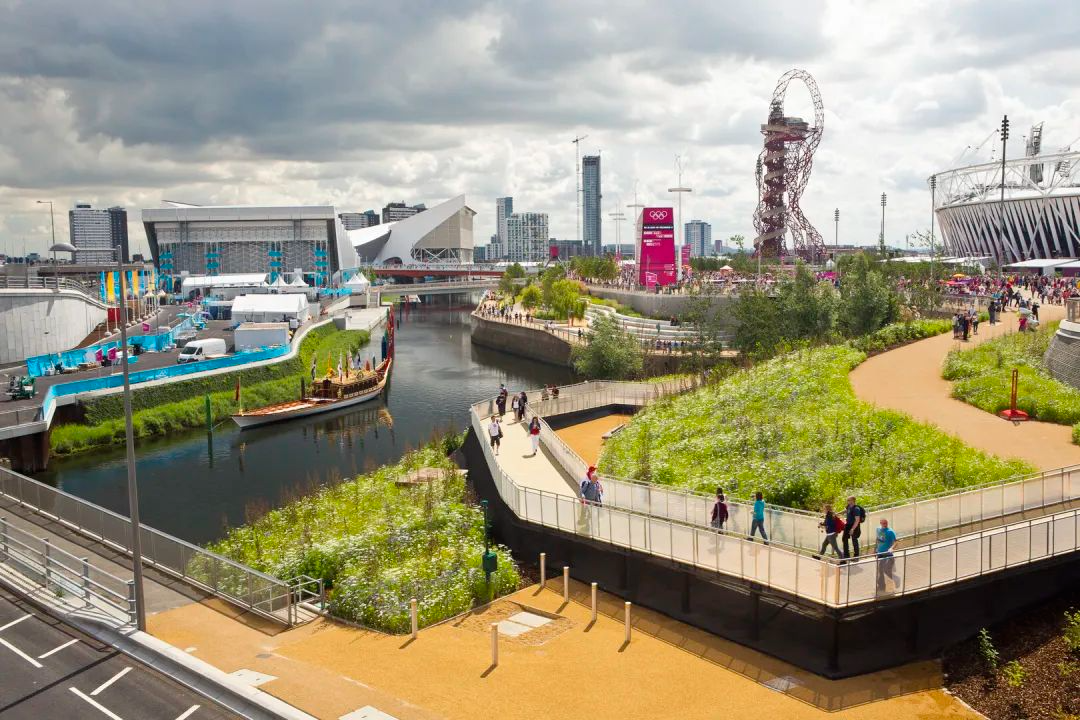

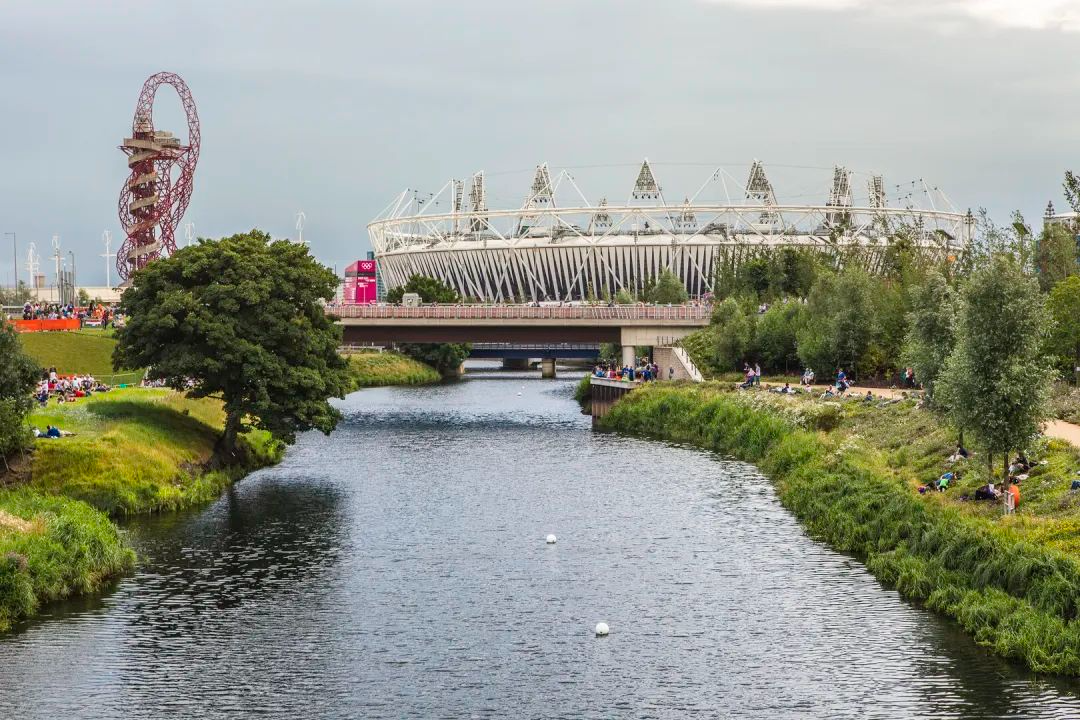
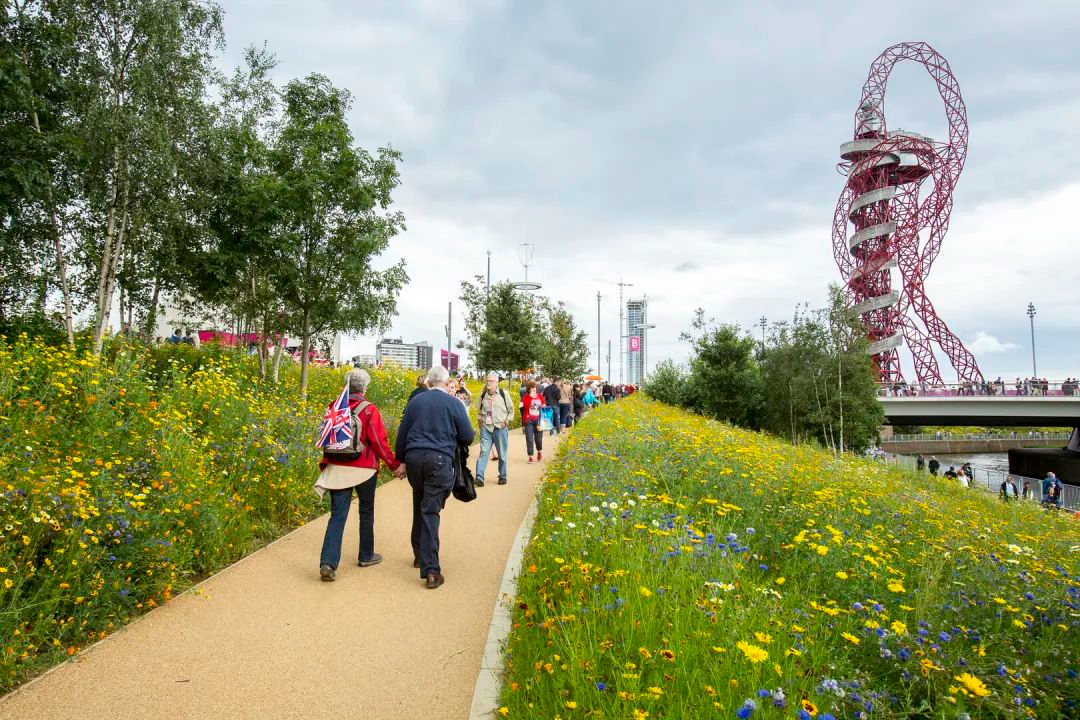
2012伦敦奥运会 ©AECOM
今天,当我们面对诸多全球性挑战,景观设计在应对气候变化和生物多样性危机等方面正发挥着极其重要的作用,它在我们的城市发展中扮演很重要的角色。
I think landscape is incredibly important, and in today's society with big issues that we face globally, particularly in terms of climate change and biodiversity loss, landscape architecture plays a very important role in our city development.

在科技时代的城市发展中,景观的力量不容小觑:通过营造更具包容性、可持续性的城市公共空间,为历史文化街区增添活力。在更宏观的层面,景观连接起城市街区与周边生态空间,将城市与自然相连,甚至跨越国界。西安,这座“一带一路”开放之都,不仅可以通往历史文化丝路、科技创新发展丝路,也可以将高新科技与景观设计结合,打造生态环境保护的绿色丝路走廊。
For urban development in this technological age, the power of landscape cannot be underestimated. It can revitalize historical heritage by creating a more inclusive and sustainable public space. At a macro level, landscape connects communities to the surrounding green space, and cities to the greater nature. This is a connectivity which may even extend beyond national borders. Xi’an, as an open metropolis of the Belt and Road Initiative, can not only lead to a Silk Road of history and culture, of technological development and innovation, but also a green Silk-Road- corridor of environmental protection, by integrating landscape with high-tech development.
发文编辑|Aaron
审核编辑 | Miranda
采访/撰写 | Ming、Zhenyu、Jiqing / Yutong
版权©建道筑格ArchiDogs,转载请联系media@archidogs.com
若有涉及任何版权问题,请联系media@archidogs.com,我们将尽快妥善处理。

